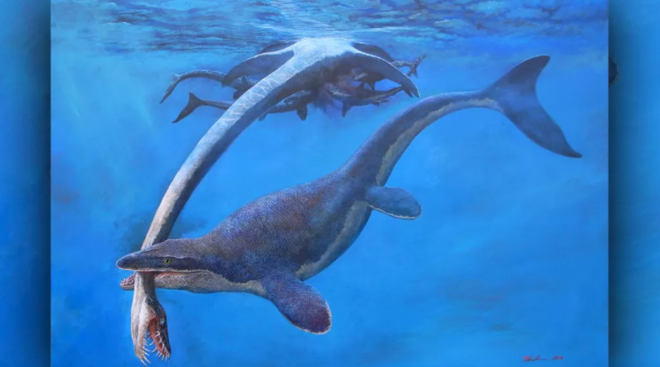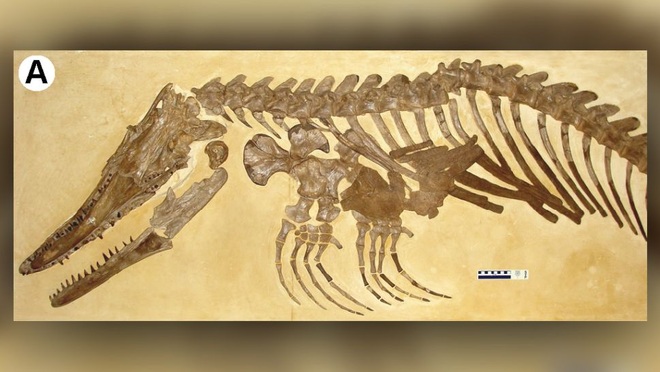“They have very thin mouths, probably adapted to the ability to catch fish quickly, rather than biting into something hard like a turtle’s shell,” said researcher Konishi.

Graphic image of a sea monster that once dominated the Cretaceous ocean.
More than 80 million years ago, during the Cretaceous period, when dinosaurs were still alive on Earth, an 18-foot (about 5.48 meters) sea monster called a mosasaur dominated the ancient oceans. grand.
In fact, paleontologists discovered fossils of this sea monster in the 1970s, but they had difficulty classifying them.
Therefore, the people decided to store the fossil, along with other mosasaur specimens of the genus Platecarpus, at Fort Hays State University’s Sternberg Museum of Natural History (FHSM) in Kansas (USA).
Recently, researchers have unearthed a mysterious fossil with skull fragments, a jawbone and a few bones in the back of the head. To their surprise, they discovered that this reptile was not part of the genus Platecarpus.
Instead, it is a close relative of a rare species of mosasaur, which has only been known from a single specimen to date.
This specimen, named Ectenosaurus everhartorum, is also the second known species in the genus Ectenosaurus, before the first representative was described in 1967.

Fossils simulate the bone structure of rare species of mosasaur.
Takuya Konishi, co-author of the study and a vertebrate paleontologist at the University of Cincinnati, said the sea monster has a rather strange biological structure.
“They have very thin mouths, probably because they are adapted to the ability to catch fish quickly, rather than biting into something hard like a turtle shell,” Konishi said.
The researchers also found a strange feature on this specimen, which is a small notch in the mandibular joint, which has never been seen on any mosasaur.
To date, paleontologists have discovered more than 1,800 mosasaur specimens in various regions of the world. But for now, the entire genus Ectenosaurus is made up of only two fossils – and also separate species.
“This is very strange,” Konishi said. “Why is it so rare that the fossils of a mosasaur in the central sea, in which you can find hundreds of Platecarpus?”
Scientists hypothesize that the animal may have moved closer to the coast, or further into the polar seas.
Source: theconversation.com








